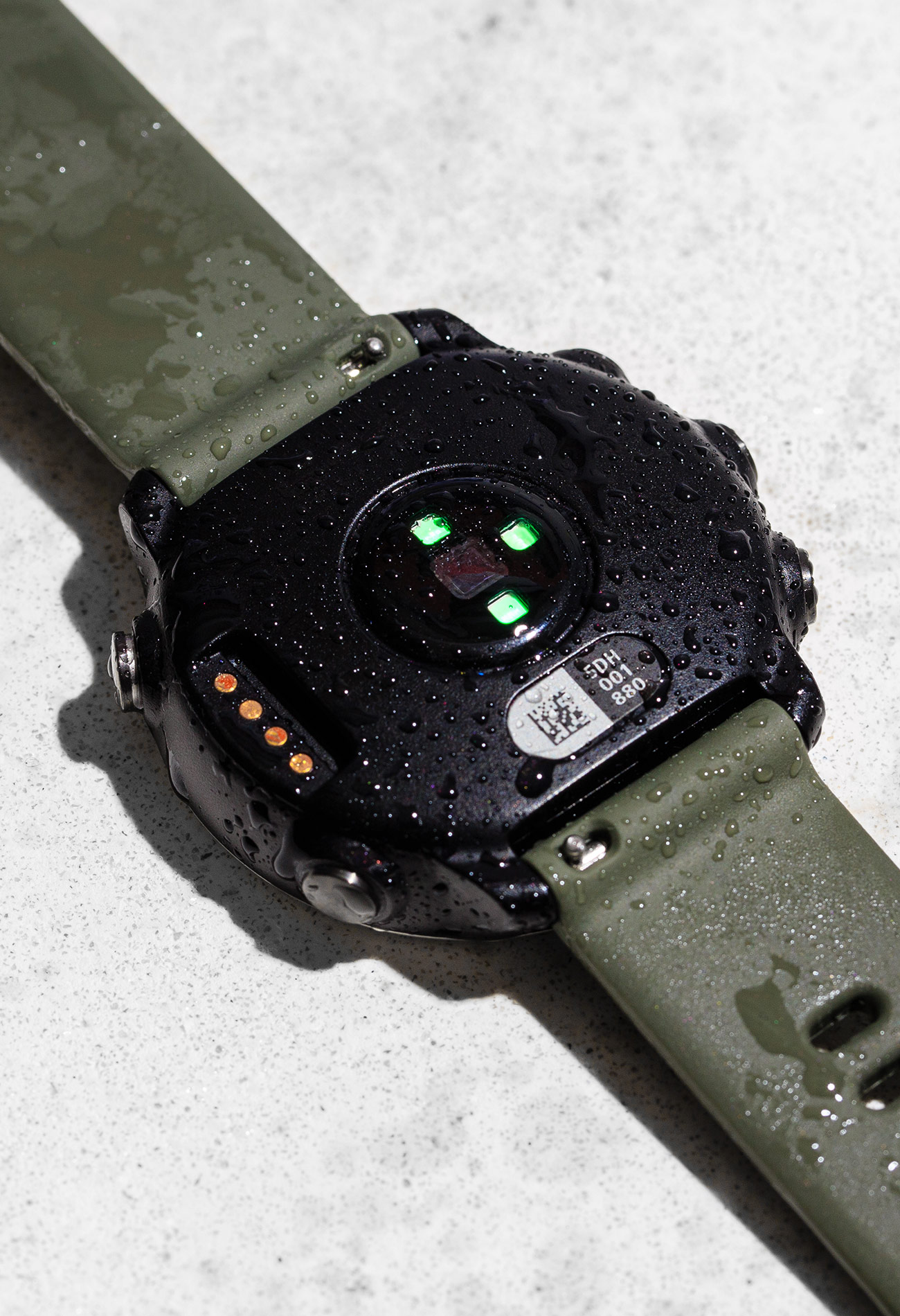Garmin has set the standard for accurate and reliable GPS with its collection of running watches. The latest addition to its line is the Forerunner 645 Music, which was announced at the Consumer Electronics Show earlier this year. Its hallmark feature? Built-in music storage. But is the new music feature worth the price tag?
The Good: Garmin knows how to make great running watches. Its Forerunner has been at the front of the GPS category for serious runners since its inception. This new model does everything past models have done including tracking steps, calories, floors climbed, distance traveled, continuous heart rate data and recovery time. Plus, all of the hardcore running stats like GPS-distance, cadence, race predictor and performance condition outside, on the treadmill and indoor track. The newest 645 brings two new features to the table: Garmin Pay and built-in music. If you enjoy running untethered to a larger device like a cell phone, this could be your new running watch.

Who They’re For: Anyone who is excited to ditch their phone when they’re running, but still want to listen to music. Also, runners who dabble in cross training like swimming, strength training – even skiing and snowboarding.
Watch Out For: Getting music to play without carrying your phone with you is a bit tricky. If you have music saved on your computer, it takes all of two minutes to load that on the device, but if you use a streaming service (like Pandora or Spotify), you’ll have to go old-school and upload some MP3 files to get music on the watch. Garmin is partnering with iHeartRadio and Deezer, but the app to test iHeartRadio wasn’t done in time for this review. It should be out in the next week or so. If you always carry your phone on you when you run, it might make sense to save the $50 and get the standard 645 without music capabilities.
Unlike Garmin’s Vivoactive 3, the 645 isn’t touch-screen, which may or may not be an issue depending on what you’re used to or looking for. Lastly, $450 for the music version ($400 without) is a bit steep in comparison to the Fitbit Ionic at $300 and the Apple Watch Series 3 at $329.
Alternatives: Strong running watch competitors include the Apple Watch Series 3 ($329), Garmin Fenix 5X ($650), Fitbit Ionic ($299) or Samsung’s Gear Sport ($300). The Fitbit Blaze ($200) and the Garmin Vivosport ($199) are both less expensive and have similar features. Apple lets you stream music from Apple Music and the Fitbit Ionic offers Deezer and Pandora connections. The Samsung Gear Fit 2 and Gear Fit 2 Pro both offer the ability to save Spotify music on the watch.
The Verdict:
Starting from a visual standpoint, it’s all pretty standard for Garmin — meaning high-quality. There is a chemically strengthened glass lens, a stainless steel bezel and a comfortable quick-release silicone band in a variety of colors. Wearing it all day isn’t a hassle, and the watch face is smaller than the Forerunner 630 and the 935, making it even more visually pleasing since it’s not as obtrusive as some trackers.
Garmin excels in its GPS accuracy, and the Forerunner 645 Music lives up to the brand’s high standards. It’s the area where Garmin shines in a world of too many tracking options and similar devices.
Another feature that Garmin continues to improve is its constant heart rate monitoring. Athletes who want to improve physical fitness can use the all-day tool (even during sleep) to provide them with a better picture of their resting heart rate. It’s also helpful post-run for overlaying heart rate data over running pace — to see how fast and how hard you were pushing yourself. While wrist-based heart rate tracking isn’t always the most dependable, when compared to Wahoo’s TICKR Fit, a heart rate monitor armband, the variability during a workout was less than four beats.
Even though the heart rate sensor is running all day long, I found the battery life to be sufficient for a week’s worth of runs – keeping in mind that my weekly mileage is around 10 to 15 miles. While I definitely noticed some variation in the battery life, the GPS still worked accurately when the battery was low. And when the battery does run out, it charges speedily — less than 30 minutes to charge it up 40%.
Beyond the Forerunner’s standard features, the big draw is in its music capabilities. To take advantage of the built-in music storage (up to 500 songs), you first have to connect the watch to a computer to transfer songs over — you’ll also need a pair of Bluetooth wireless headphones. The pairing a pair of headphones was easy and took less than 10 minutes. It’s not the most intuitive process — I definitely had to pull out the manual — but the Apple AirPods connected no problem. Once they were connected, it was a breeze to control the music from the watch. Even if you like to run with a phone, but stick it in a pocket, the 645 allows you to skip, pause and turn the volume up without having to take out your phone.
But what about the Forerunner’s other new feature? Setting up Garmin Pay is extremely similar to setting up Apple Pay. It took all of eight minutes to get it to work, but it did take three tries and two different credit cards. The caveat is that I tested it on the first day Garmin rolled it out, but it now works flawlessly.
What Others Are Saying:
• “For a lot of people this watch will hit its mark, and especially do so over time as Garmin matures its music offerings. It’s finally getting the pieces in place for Garmin to eventually be able to compete in the core feature checklist of having music. Undoubtedly we’ll see them eventually bridge the music portion to other devices, it’s mostly just a matter of when.” — Ray Maker, DC Rainmaker
• “There’s no doubt that the Forerunner 645 Music is a powerful device and one that could intrigue all types of users— runners or not. It has all of the stellar features of the Vivoactive 3 along with additional run-tracking capabilities and music storage. The latter two features and the inclusion of Garmin Pay could make it an obvious choice for hardcore runners who have yearned for a Garmin device that lets them leave their smartphones at home during training.” — Valentina Palladino, Ars Technica
• “The Garmin Forerunner 645 Music is a nice step forward for the brand, but it’s more style over function. Battery life should be better for the price (and will, perhaps, improve with testing) and the musical element is too basic without the streaming services on board.” — Gareth Beavis, Tech Radar
Key Specs
Weight: 42.2 grams
Physical Size: 42.5 x 42.5 x 13.5 mm
Battery Life: Up to 7 days in smartwatch mode; Up to 5 hours in GPS mode
Water Rating: 5 ATM
Weight: 13mm



